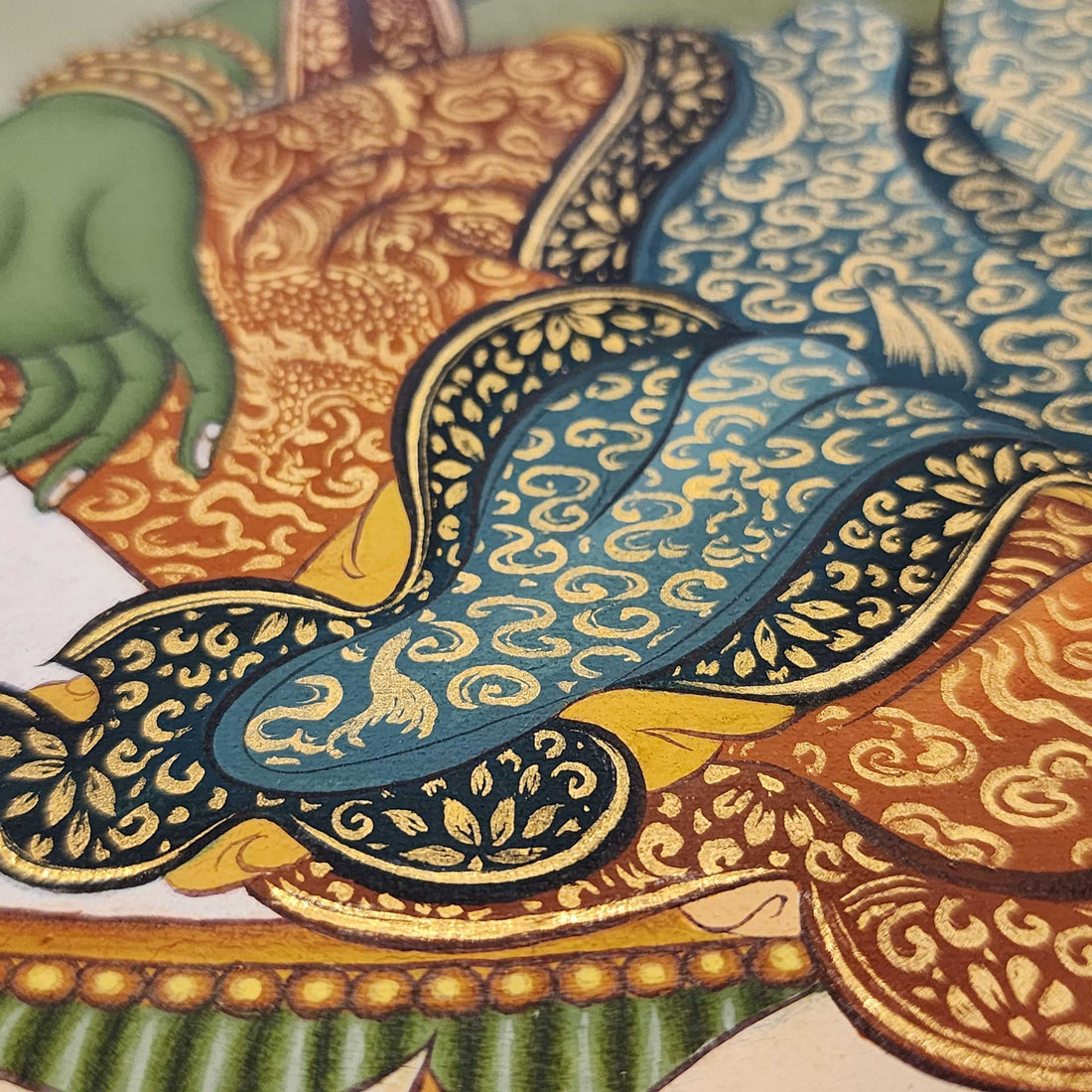
The Symbolism of the Vajra in Thangka Art
Share
Introduction
The Vajra is one of the most important ritual objects in Tibetan Buddhism and frequently appears in Thangka art. Known as the “thunderbolt” or “diamond,” it symbolizes indestructible truth and unshakable spiritual power.
Meaning of the Vajra
— The Vajra represents indestructibility, like a diamond, and irresistible force, like a thunderbolt.
— It embodies the union of wisdom and compassion. The two essential qualities for enlightenment.
Structure of the Vajra
— Central Sphere: Represents the ultimate truth and emptiness.
— Lotus Petals: Symbolize purity and the unfolding of spiritual awakening.
— Prongs (usually 5): Represent the five Buddha families and five wisdoms.
The Vajra in Deity Iconography
— Deities such as Vajrapani hold the Vajra as a weapon of spiritual protection.
— It is often shown in the right hand, symbolizing skillful means.
— When paired with a bell in the left hand, it represents the union of wisdom (bell) and compassion (vajra).
Ritual and Meditation Use
— Practitioners use a Vajra during puja ceremonies.
— Meditating on the Vajra helps develop inner strength and clarity.
— Its presence in Thangkas reminds viewers of the indestructible path to enlightenment.
Symbol of Transformation
— The Vajra cuts through ignorance and illusion.
— It transforms negative emotions into enlightened wisdom.
Conclusion
In Thangka art, the Vajra is not just a symbol. It is a reminder of the unbreakable strength of wisdom and compassion. It inspires practitioners to cultivate resilience and clarity on their path to awakening.
